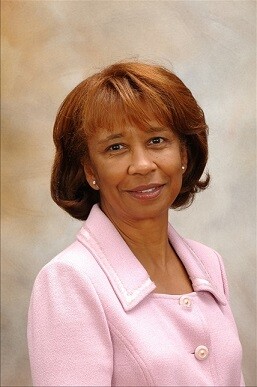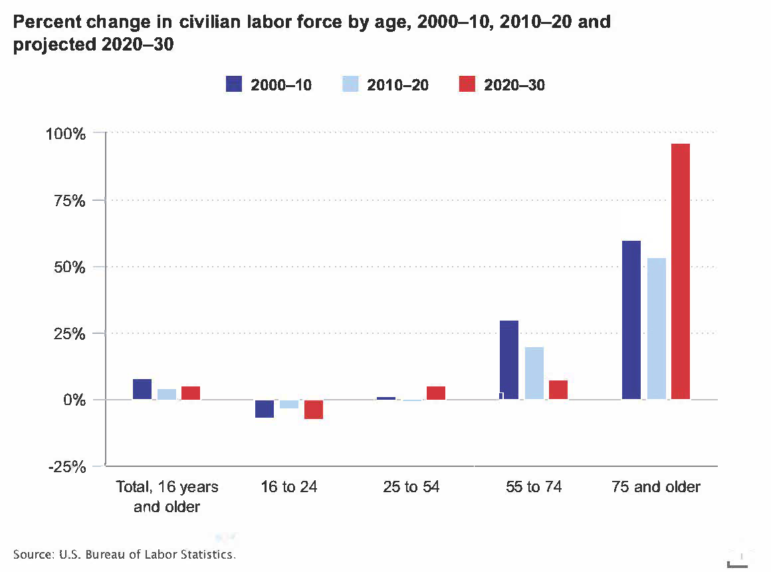By HOPE O’DELL
Capital News Service
LANSING –– Paula Cunningham has retired twice.
“Well, I transitioned twice,” she said.
Cunningham was the president of Lansing Community College then the CEO of Capitol National Bank. She’s been the state director for AARP Michigan since 2015.
She’s representative of many older Americans who want to stay in the workplace, even in the face of possible age discrimination.
“Not only are people waiting longer to retire, but they’re going back to work after they retire,” Cunningham said. “They want to go back to work.”
Close to one in three Americans in their 50s plan to postpone their retirement, and that number goes to one in five for those in their 60s, according to a January survey by SimplyWise, a retirement planning website.
Those are the highest numbers since the start of the COVID-19 pandemic, according to AARP.

Courtesy photo
Paula Cunningham, state director of AARP Michigan.As older Americans postpone retirement, the workforce ages.
Among those 75 and older, the labor force is expected to grow by 96.5% by 2030, according to the Bureau of Labor Statistics.
But many older American workers are experiencing age discrimination, which is at its highest since 2003. According to AARP, 78% of older workers have seen or experienced age bias on the job.
In Michigan, 2,489 age discrimination claims were made with the U.S. Equal Employment Opportunity Commission in 2017. This makes Michigan –– which has the ninth-largest population –– 12th in the nation for claims made.
In mid-January, the state Supreme Court heard arguments in a Saginaw County case filed by a former human resources department employee who was turned down at age 60 when she applied for a different position. Coventry Medical Center hired a younger applicant instead.
A jury awarded Denise Doster $540,269 in damages, but a Court of Appeals panel threw out the verdict. Now Doster wants the Supreme Court to reinstate the award.
AARP, whose members are 50 or older, runs a program to help older applicants bypass discriminatory employers. Meanwhile, many older workers are calling for more legal protections, including a tougher federal law.
Discrimination often takes the form of comments pushing an older employee to retire or expressing the desire for a younger employee, said Jennifer Salvatore, a Detroit-based civil rights lawyer.
It can also include choosing a younger job applicant over an older one because of their age. In an extreme case, Salvatore said an employer set an illegal policy requiring employees to retire at 59½.
“In some ways, I feel like it’s almost more socially acceptable for people to discriminate based on age than it is to discriminate based on race or gender,” Salvatore said. “You hear more comments, you hear more direct evidence of age discrimination than you do other types of discrimination.”
Michigan AARP and Michigan Works! run a program where employers can list a job opening and an application is emailed to AARP Michigan’s 1.3 million members. AARP also hosts hiring events where employers and applicants can meet.
Cunningham said those employers know beforehand that applicants are older, which helps prevent discrimination.

U.S. Bureau of Labor Statistics
Percent change in civilian labor force by age, 2000-01, 2010-20 and projected 2020-30The program was piloted in 2019 in Grand Rapids, Lansing and Detroit –– 74 people were hired during that pilot run. After that, the COVID-19 pandemic pushed the program to virtual.
There are more than 100,000 unfilled jobs in Michigan, according to Pure Michigan Talent Connect.
Older Michigan residents can help fill these vacancies, Cunningham said, and bring more experience to the table.
“The data has shown over and over and over again that older adults are more reliable,” Cunningham said. “They come to work on time, they stay all day. They don’t have drama. They’re great mentors for younger people in the workplace, so we need to get them connected” to employers.
Older workers tend to be more reliable and show up to work more consistently, according to a 2018 study in the academic journal “Revista De Gestão.”
There are federal and state laws protecting older workers. At the federal level, the Age Discrimination in Employment Act protects those who are 40 and older. In Michigan, the Elliott-Larsen Civil Rights Act protects older residents.
But 96% of older workers said laws to combat age discrimination should be stronger, according to a 2020 AARP survey.
Salvatore said that the trend toward mandatory arbitration of disputes hurts all workers, including those who experience age discrimination. That means that employees sign a policy waiving their right for disputes to be heard in court by a jury rather than by an arbitrator who is often more likely to be pro-employer.
To strengthen protections for older workers, the U.S. House of Representatives passed a bill in November that would make clear that job applicants are covered by the Age Discrimination in Employment Act.
Senate passage is uncertain due to a lack of Republican support, according to an article in Forbes.
If age discrimination is curbed, older workers can help fill the current labor gap, Cunningham said.
“For every job that’s unfilled, it impacts our economy. People are not going to the movies (or) going to dinner because they’re not working,” she said. “It is a real issue for the state of Michigan.”